Economic Cost-Analysis of the Impact of Container Size on Transplanted Tree Value
Abstract
:1. Introduction
2. Materials and Methods
2.1. Initial Costs
2.2. Equivalent Costs
3. Results and Discussion
3.1. Initial Costs
3.2. Equivalent Costs
4. Conclusions
Acknowledgments
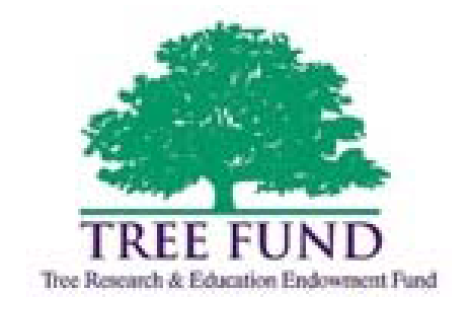
Author Contributions
Conflicts of Interest
References
- Arnold, M.A. Challenges and benefits of transplanting large trees: An introduction to the workshop. HortTechnology 2004, 15, 115–117. [Google Scholar]
- Watson, W.T. Influence of tree size on transplant establishment and growth. HortTechnology 2004, 15, 118–122. [Google Scholar]
- Kalmbach, K.L.; Kielbaso, J.J. Residents’ attitudes toward selected characteristics of street tree plantings. J. Arboric. 1979, 5, 124–129. [Google Scholar]
- Schroeder, H.; Flannigan, J.; Coles, R. Residents’ attitudes toward street trees in the UK and U.S. communities. Arboric. Urban For. 2006, 32, 236–246. [Google Scholar]
- Nowak, D.J.; Hoehn, R.; Crane, D. Oxygen production by urban trees in the United States. Arboric. Urban For. 2007, 33, 220–226. [Google Scholar]
- Watson, G.W.; Himelick, E.B. The Practical Science of Planting Trees; International Society of Arboriculture: Champaign, IL, USA, 2013. [Google Scholar]
- Maco, S.E.; McPherson, E.G. A practical approach to assessing structure, function, and value of street tree populations in small communities. J. Arboric. 2003, 29, 84–97. [Google Scholar]
- Gilman, E.F.; Black, R.J.; Dehgan, B. Irrigation volume and frequency and tree size affect establishment rate. J. Arboric. 1998, 24, 1–9. [Google Scholar]
- Gilman, E.F.; Kane, M.E. Root growth of red maple following planting from containers. HortScience 1990, 25, 527–528. [Google Scholar]
- Cullen, S. Tree appraisal: What is the trunk formula method. Arboric. Consul. 2000, 30, 3. [Google Scholar]
- Council of Landscape & Tree Appraisers. Guide for Plant Appraisal, 9th ed.; International Society of Arboriculture: Champaign, IL, USA, 2000. [Google Scholar]
- Cullen, S. Tree appraisal: Chronology of North American industry guidance. J. Arboric. 2005, 31, 157–162. [Google Scholar]
- Cullen, S. Tree appraisal: Can depreciation factors be rated greater than 100%? J. Arboric. 2002, 28, 153–158. [Google Scholar]
- McPherson, E.G. Benefit-based tree valuation. Arboric. Urban For. 2007, 33, 1–11. [Google Scholar]
- The Appraisal Institute. The appraisal of rural property. Apprais. J. 2000, 68, 20. [Google Scholar]
- Mcpherson, E.G.; Kendall, A.; Albers, S. Life cycle assessment of carbon dioxide for different arboricultural practices in Los Angeles, CA. Urban For. Urban Green. 2015, 14, 388–397. [Google Scholar] [CrossRef]
- McPherson, E.G. Northern Mountain and Prairie Community Tree Guide: Benefits, Costs and Strategic Planting; Center for Urban Forest Research, USDA Forest Service, Pacific Southwest Research Station: Davis, CA, USA, 2003. [Google Scholar]
- Xiao, Q.; McPherson, E.G.; Ustin, S.L.; Grismer, M.E. A new approach to modeling tree rainfall interception. J. Geophys. Res. 2000, 105, 29173–29188. [Google Scholar] [CrossRef]
- Anderson, L.M.; Cordell, H.K. Residential property values improve by landscaping with trees. South. J. Appl. For. 1988, 9, 162–166. [Google Scholar]
- Garcia, L.M. Post-Transplant Establishment and Economic Value of Three Tree Species from Five Container Sizes. Master’s Thesis, Texas A&M University, College Station, TX, USA, 2015. [Google Scholar]
- Garcia, L.M.; Arnold, M.A.; Denny, G.C.; Carver, S.T.; King, A.R. Differential environments influence initial transplant establishment among tree species produced in five container sizes. Arboric. Urban For. 2016, 42, 170–180. [Google Scholar]
- American Association of Nurserymen. ANSI Z60.1-2004. In American Standards for Nursery Stock; American Association of Nurserymen: Washington, DC, USA, 2004. [Google Scholar]
- Mewis, B. RSMeans Residential Cost Data 2014, 33rd ed.; RSMeans Company: Norcross, GA, USA, 2014. [Google Scholar]
- Gilman, E.F.; Masters, F. Effect of tree size, root pruning and production method on root growth and lateral stability of Quercus virginiana. Arboric. Urban For. 2010, 36, 281–291. [Google Scholar]
- Lambert, B.B.; Harper, S.J.; Robinson, S.D. Effect of container size at time of planting on tree growth rates for baldcypress (Taxodium distichum (L.) Rich), red maple (Acer rubrum L.) and longleaf pine (Pinus palustris Mill.). Arboric. Urban For. 2010, 36, 93–99. [Google Scholar]
- Struve, D.K. Tree establishment: A review of some of the factors affecting transplant survival and establishment. Arboric. Urban For. 2009, 35, 10–13. [Google Scholar]
- Gilman, E.F.; Harchick, C.; Paz, M. Effect of tree size, root pruning, and production method on establishment of Quercus virginiana. Arboric. Urban For. 2010, 36, 183–190. [Google Scholar]
- USGS. Estimated Use of Water in the United States County-Level Data for 2005. Available online: http://water.usgs.gov/watuse/data/2005 (accessed on 6 November 2013).

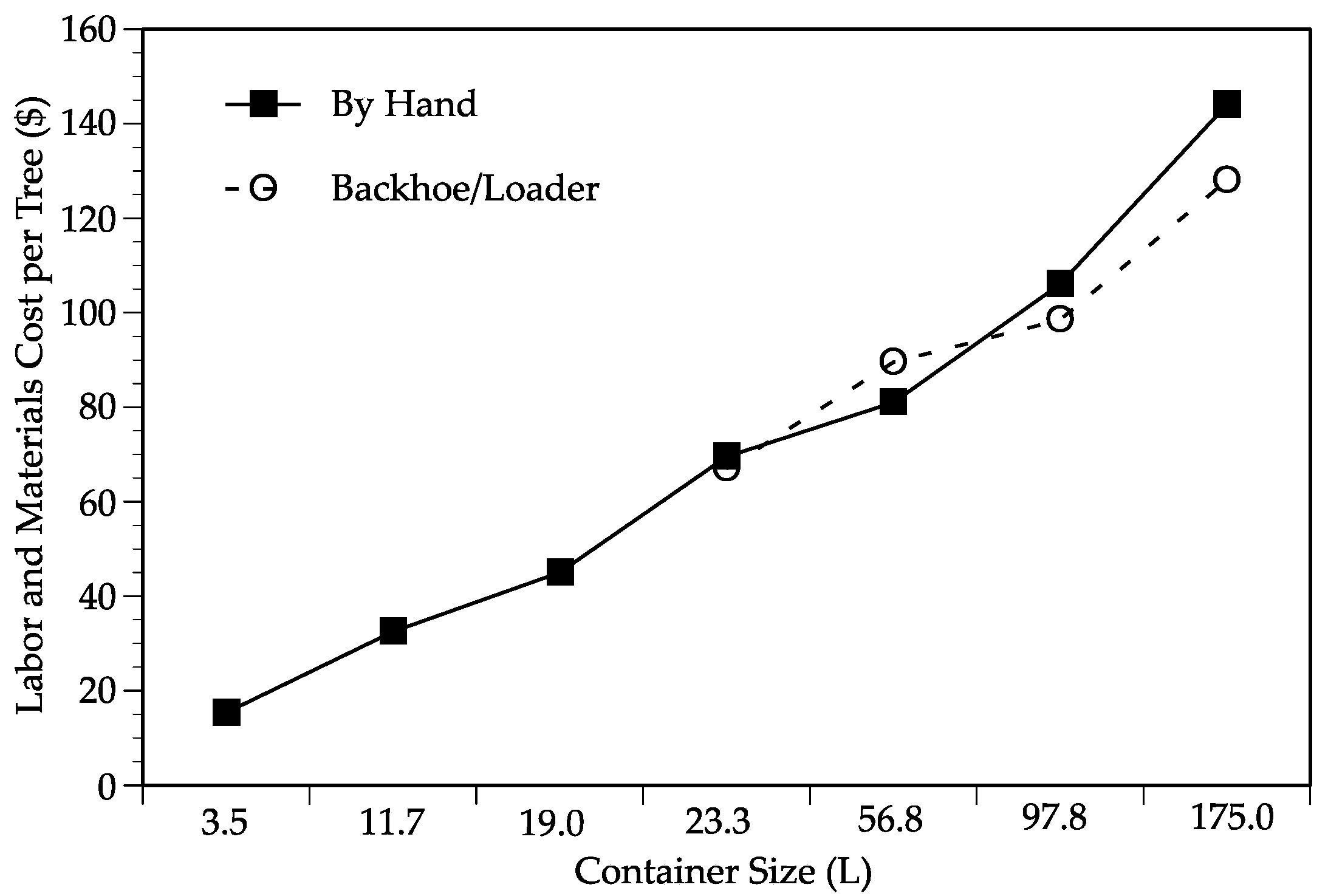
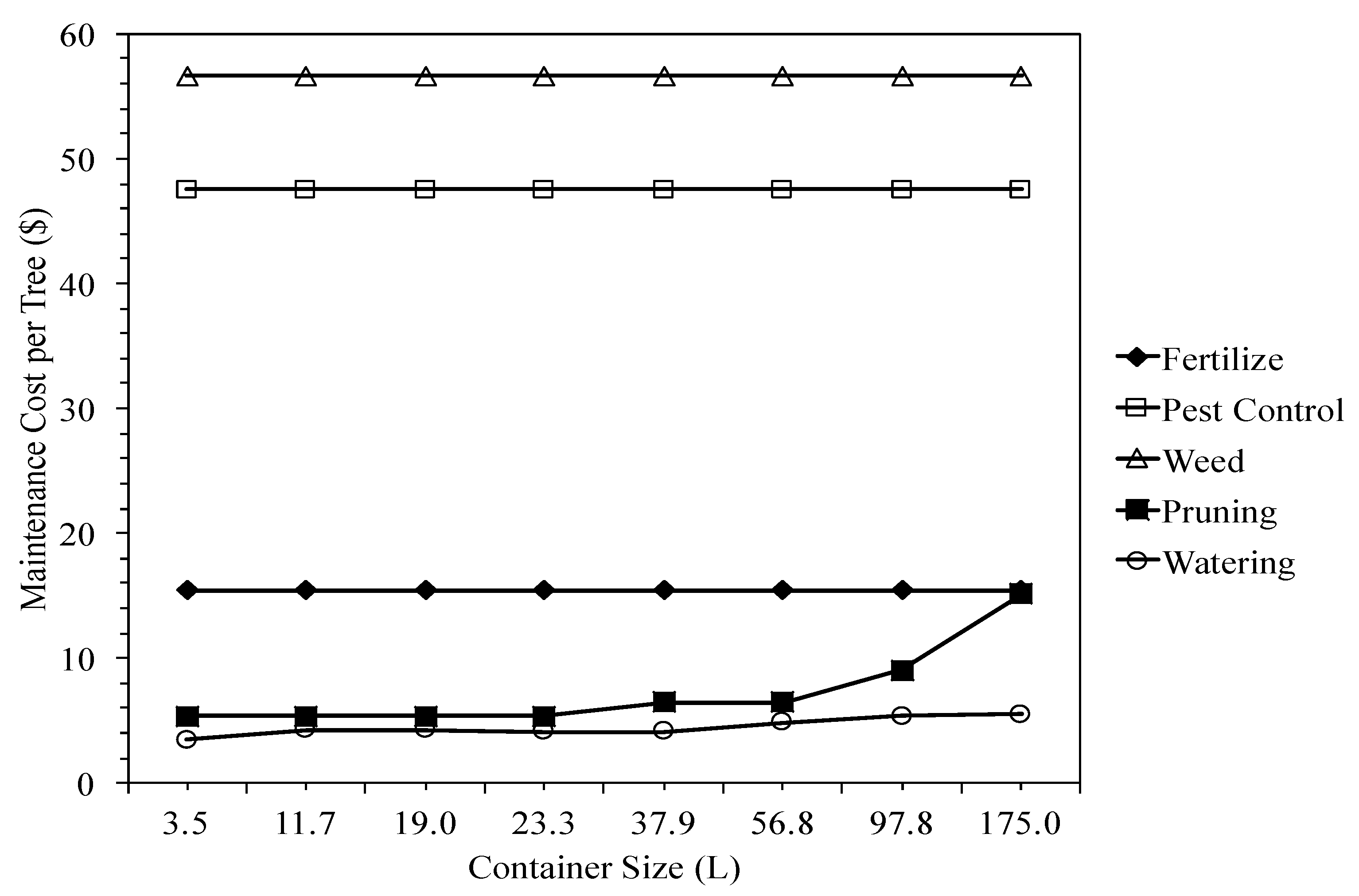
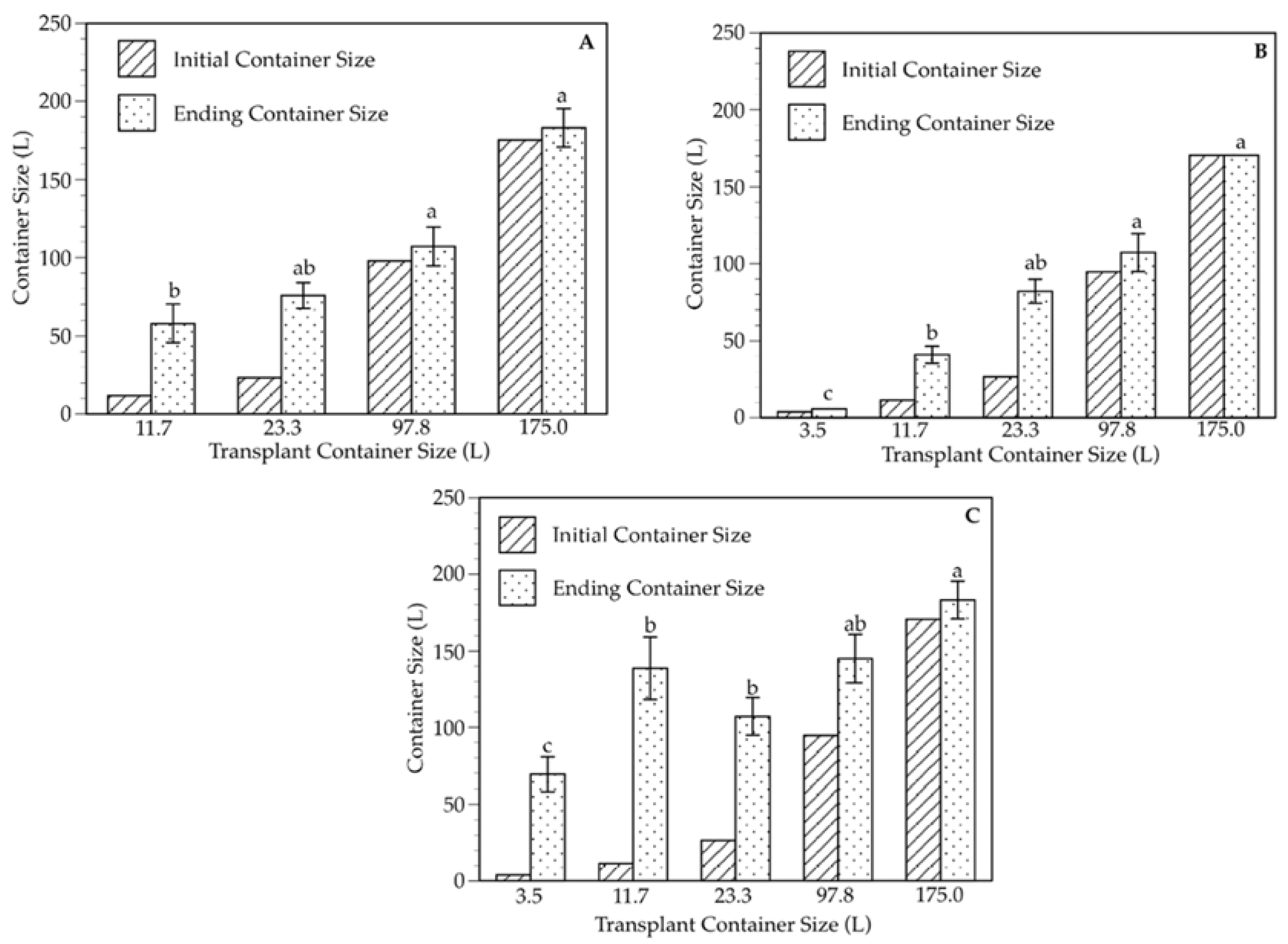
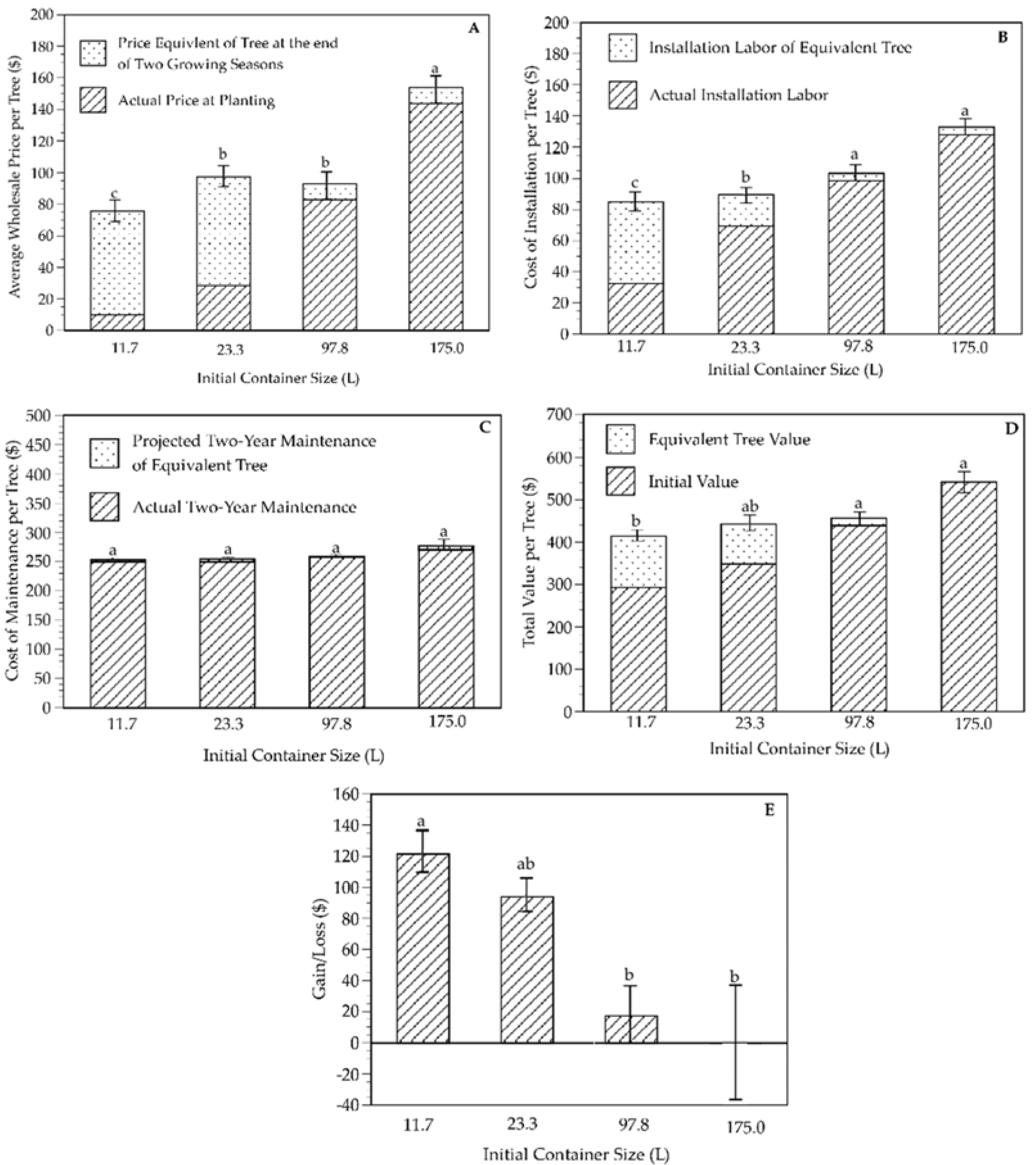
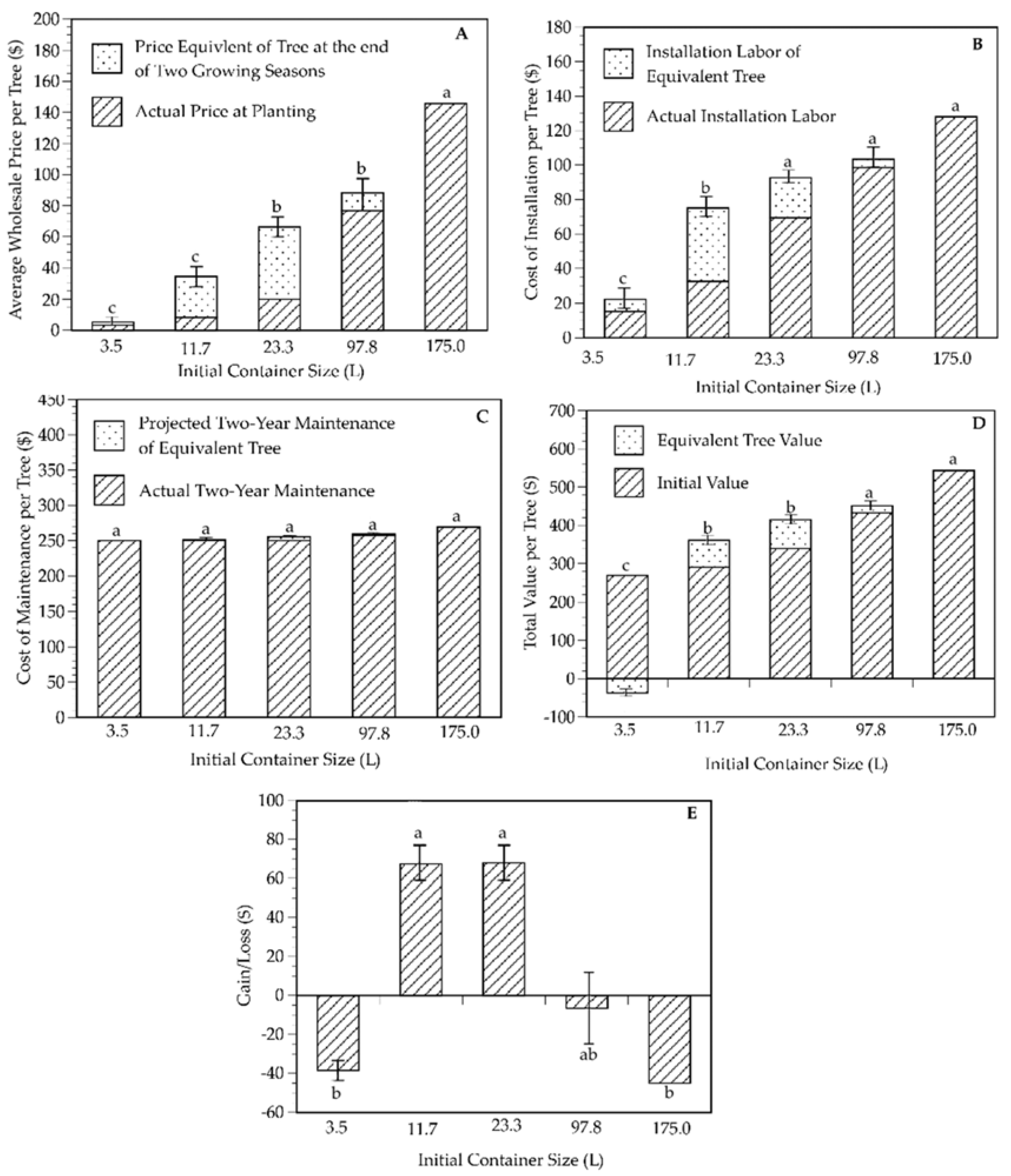
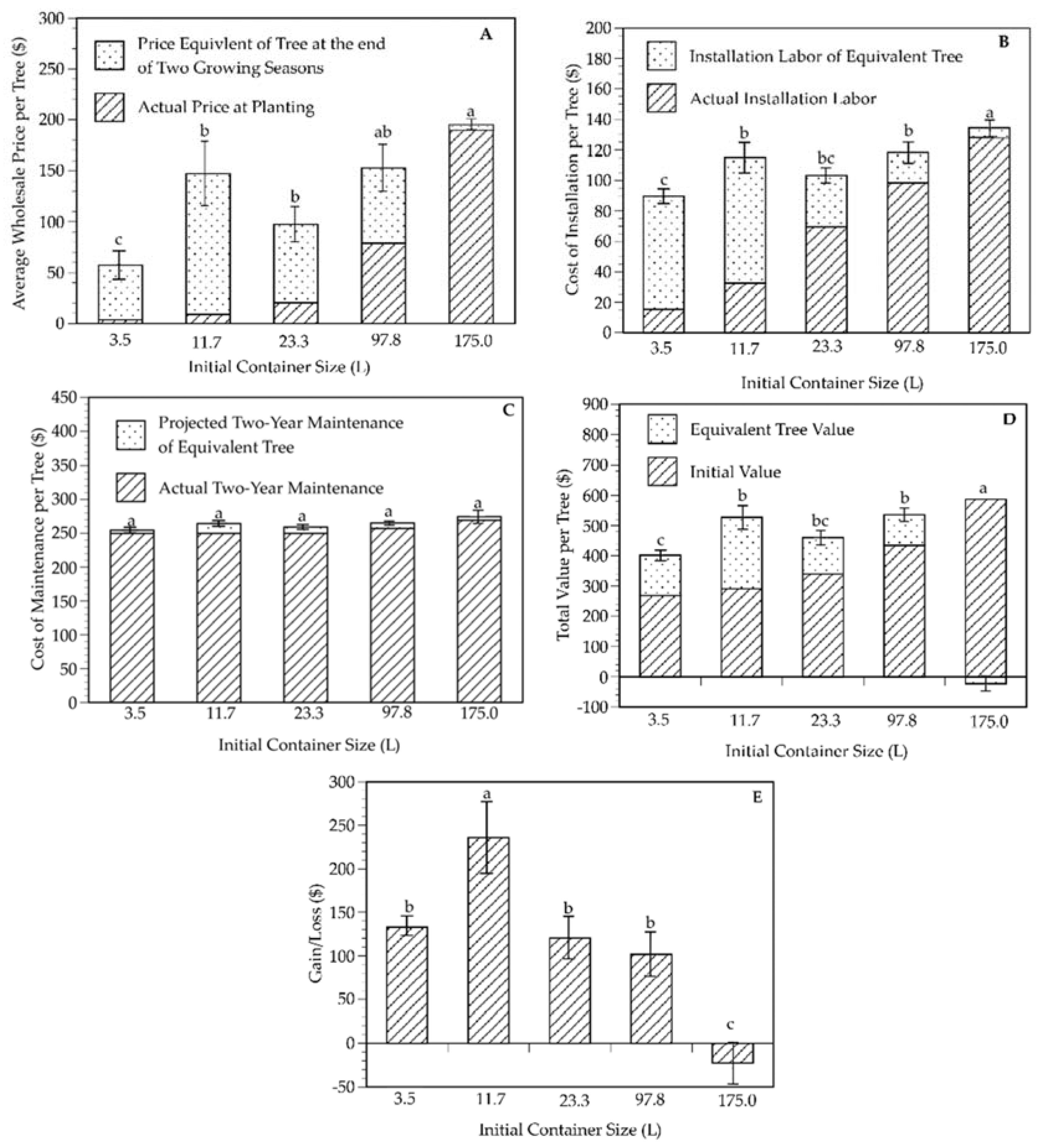
| Species | Initial Container Size (L) | Change in Container Size (L) | Change in Wholesale Price ($) | Change in Installation Cost ($) | Change in Maintenance Cost ($) | Gain/Loss in Value ($) |
|---|---|---|---|---|---|---|
| Acer rubrum | 11.7 | 46.5 ± 12.1 a,b | 45.2 ± 9.2 a,x,y | 52.4 ± 4.6 a | 3.8 ± 1.4 a | 121.4 ± 15.3 a |
| 23.3 | 49.2 ± 8.3 a | 38.5 ± 7.2 a | 20.2 ± 3.9 b | 5.6 ± 1.2 a | 94.0 ± 12.4 a,b | |
| 97.8 | 12.4 ± 12.4 b | 10.1 ± 10.1 b | 4.9 ± 4.9 c | 2.0 ± 2.0 a | 17.1 ± 17.1 b | |
| 175 | 12.4 ± 12.4 b | 18.0 ± 18.0 a,b | 4.8 ± 4.8 c | 9.7 ± 9.7 a | 0.0 ± 32.5 b | |
| Taxodium distichum | 3.5 | 1.8 ± 1.8 c | 2.0 ± 1.3 c | 6.9 ± 5.0 c | 0.2 ± 0.1 b | −38.4 ± 6.5 b |
| 11.7 | 29.5 ± 5.6 b | 26.0 ± 4.9 b | 42.5 ± 6.0 a | 1.8 ± 0.3 b | 67.3 ± 11.0 a | |
| 23.3 | 55.2 ± 7.9 a | 46.2 ± 6.6 a | 23.1 ± 3.6 b | 6.6 ± 1.2 a | 68.0 ± 11.5 a | |
| 97.8 | 12.4 ± 12.4 b,c | 11.5 ± 11.5 b,c | 4.9 ± 4.9 c | 2.0 ± 2.0 b | −6.6 ± 18.4 a,b | |
| 175 | 0.0 ± 0.0 c | 0.0 ± 0.0 c | 0.0 ± 0.0 c | 0.0 ± 0.0 b | −45.0 ± 0.0 b | |
| Vitex agnus-castus | 3.5 | 65.4 ± 11.3 b | 53.8 ± 10.0 b | 74.4 ± 3.9 a | 6.1 ± 1.3 a | 132.9 ± 15.2 b |
| 11.7 | 127.1 ± 20.4 a | 138.5 ± 27.0 a | 82.7 ± 8.3 a | 15.5 ± 3.2 a | 235.8 ± 38.6 a | |
| 23.3 | 80.6 ± 12.4 a,b | 77.1 ± 18.4 a,b | 33.9 ± 4.9 b | 10.5 ± 2.0 a | 120.3 ± 25.4 b | |
| 97.8 | 50.3 ± 15.8 b | 73.8 ± 23.3 a,b | 19.6 ± 6.2 b | 8.1 ± 2.5 a | 101.6 ± 32.1 b | |
| 175 | 14.0 ± 14.0 c | 12.4 ± 12.4 c | 4.8 ± 4.8 c | 9.7 ± 9.7 a | −22.6 ± 28.5 c | |
| Species | *** | *** z | *** | *** | *** | |
| Container Size | *** | *** | *** | *** | *** | |
| Species * Container Size | * | n.s. | * | n.s. | * | |
© 2017 by the authors. Licensee MDPI, Basel, Switzerland. This article is an open access article distributed under the terms and conditions of the Creative Commons Attribution (CC BY) license (http://creativecommons.org/licenses/by/4.0/).
Share and Cite
Garcia Chance, L.M.; Arnold, M.A.; Hall, C.R.; Carver, S.T. Economic Cost-Analysis of the Impact of Container Size on Transplanted Tree Value. Horticulturae 2017, 3, 29. https://doi.org/10.3390/horticulturae3020029
Garcia Chance LM, Arnold MA, Hall CR, Carver ST. Economic Cost-Analysis of the Impact of Container Size on Transplanted Tree Value. Horticulturae. 2017; 3(2):29. https://doi.org/10.3390/horticulturae3020029
Chicago/Turabian StyleGarcia Chance, Lauren M., Michael A. Arnold, Charles R. Hall, and Sean T. Carver. 2017. "Economic Cost-Analysis of the Impact of Container Size on Transplanted Tree Value" Horticulturae 3, no. 2: 29. https://doi.org/10.3390/horticulturae3020029
APA StyleGarcia Chance, L. M., Arnold, M. A., Hall, C. R., & Carver, S. T. (2017). Economic Cost-Analysis of the Impact of Container Size on Transplanted Tree Value. Horticulturae, 3(2), 29. https://doi.org/10.3390/horticulturae3020029







